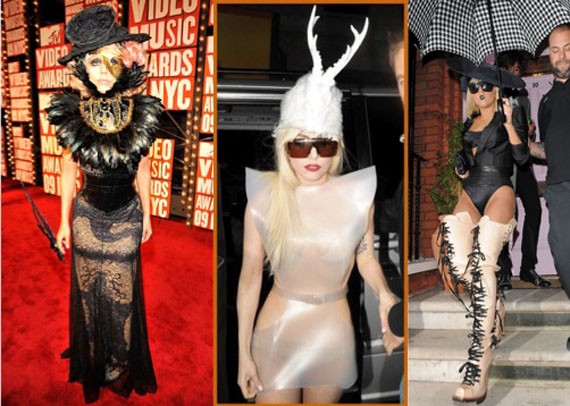Designers like Alexander McQueen, Romain Kremer and Gareth Pugh, Lady Gaga (aka Stefani Germanotta) has helped lead a fashion transformation among today’s female artists. Everyone from Beyoncé to Rihanna has now recognized the marketing value of outlandish designer outfits, but they are all still dressing in Gaga’s shadow. Music and fashion have always gone hand in hand, but the classic creative pairing is now joined by a necessary business sense-even Forbes proclaimed that Lady Gaga is the music industry’s new business model.
Not all young fashion bloggers — even the ones getting the most attention today — will have staying power in the years to come. But the internet’s democratising effect certainly offers tremendous opportunity for exceptional young talent to break through and shape the new, digitally accessible fashion industry that’s emerging, while conversely making it less likely that anybody in the future will have as much consolidated influence as figures like Suzy Menkes or Anna Wintour do today.
For decades, a quick route to fashion world prominence involved a designer turning a youth culture trend into a runway-ready collection. Calvin Klein made heroin chic, Jean Paul Gaultier sampled from club culture, Marc Jacobs glammed-up grunge and Hedi Slimane turned Berlin punks into fashion plates.
The concept was simple, even if the design work wasn’t: find a scruffy outsider style that remained untapped, then spruce it up for the luxury market. But today, as high fashion becomes increasingly accessible, this approach may no longer work. Today’s internet-empowered youth have the tools, access and information to create and promote their own fashion culture.
While some in the fashion media have been fixating on the growing importance of editorial coverage by young bloggers, relatively little has been said about a broader democratisation that’s happening in the fashion industry overall. For one thing, runway knock-offs — formerly a marginal industry — have become a borderline acceptable business practice, with stores such as Zara and Forever 21 building successful franchises by copycatting high fashion designs. In a sense, fast fashion collaborations such as Jimmy Choo for H&M or Rodarte for Target seem to legitimise this practice.
At the same time that affordable imitations of high fashion have emerged as a widespread, easy option for budget-conscious fashionistas, the once closed system that has long dominated high fashion has become increasingly transparent and accessible. The latest runway images are available online for anyone to see, while the behind-the-scenes machinations of the fashion industry have become fodder for popular movies and TV shows, from The September Issue and The Devil Wears Prada to The Rachel Zoe Project. Within this context, the power dynamic between high fashion and youth culture has changed dramatically.
